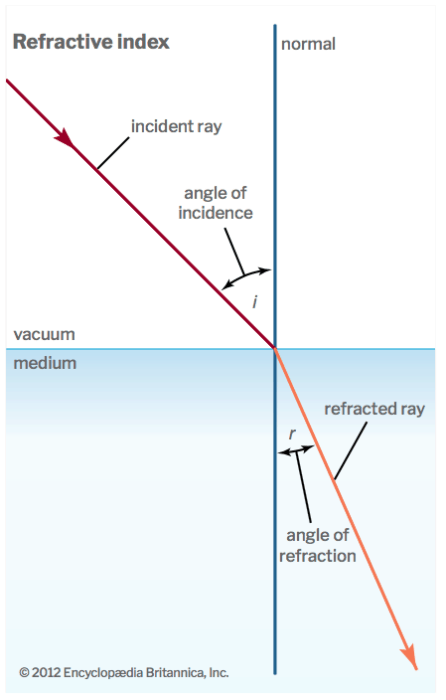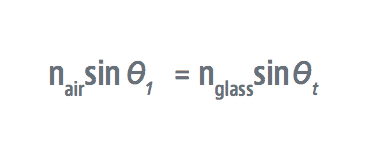Understanding the behavior of light can be an important factor when determining which glass materials to use for your manufacturing process. When light passes through a substance, it decreases in velocity. This is manifested by an increase in the substance’s refractive index. Much can be learned about the optical properties of a glass material by looking at its refractive index.
 Refractive index is useful for various reasons. For one thing, it can be used to calculate the focusing power of lenses and the dispersive power of prisms. It can also be used in estimating the thermophysical properties of hydrocarbons and petroleum mixtures.
Refractive index is useful for various reasons. For one thing, it can be used to calculate the focusing power of lenses and the dispersive power of prisms. It can also be used in estimating the thermophysical properties of hydrocarbons and petroleum mixtures.
What is the Refractive Index?
Also commonly referred to as the index of refraction, the refractive index, n, measures a ray of light as it travels from one medium to another. As it begins to travel through a material, the interaction between electrons and photons reduces the speed of light. As the density of the electrons increase, the velocity of light becomes slower. This is why light moves at its highest possible speed in a vacuum, where no electrons hamper its speed.
Knowing the refractive index – among other thermal, chemical and physical properties – helps ensure that the glass material you’re considering for your application is suitable for its intended use.
Determining the Refractive Index of a Material
The ratio between the speed of light in a vacuum and the lower velocity of the light as it travels through a given material enables us to determine the refractive index of a given material.
In addition, the amounts of transmitted and reflected light will determine not only the refractive index of a glass material, but also its angle of refraction. This is because light gets transmitted and reflected as light rays pass through the surface of a glass material.
The light’s transmission angle can be calculated using Snell’s law:

The discrepancy between the light’s transmission and the incidence angle becomes bigger as the index of refraction becomes larger. When this occurs, there is a change in the existing refractive index between the glass and the surrounding medium.
When Θi = 0°, the amount of reflected light can be determined using the following formula:

Lastly, the intensity of light is reduced by an average of 4% due to lost reflection from the surface of most glass materials with a 1.5 refractive index.
A change in the index of refraction due to changes in wavelength is known as chromatic dispersion.
Conclusion
 Swift Glass has been providing custom glass manufacturing services for nearly a century, and providing high-quality solutions to OEMs is one of our core principles. Our experience and dedication to customer service enables us to understand the intricate needs of our customers, and to exceed their basic needs.
Swift Glass has been providing custom glass manufacturing services for nearly a century, and providing high-quality solutions to OEMs is one of our core principles. Our experience and dedication to customer service enables us to understand the intricate needs of our customers, and to exceed their basic needs.
An ITAR registered, ISO 9001:2015 certified company, Swift Glass is a privately-owned global leader in the quality fabricated glass parts. Swift Glass offers assistance in craftsmanship, material selection, and manufacturing of custom solutions, and design, while guaranteeing high quality and precision.
To learn more about the optical properties of glass, download our latest eBook, Understanding the Optical Properties of Glass today!




